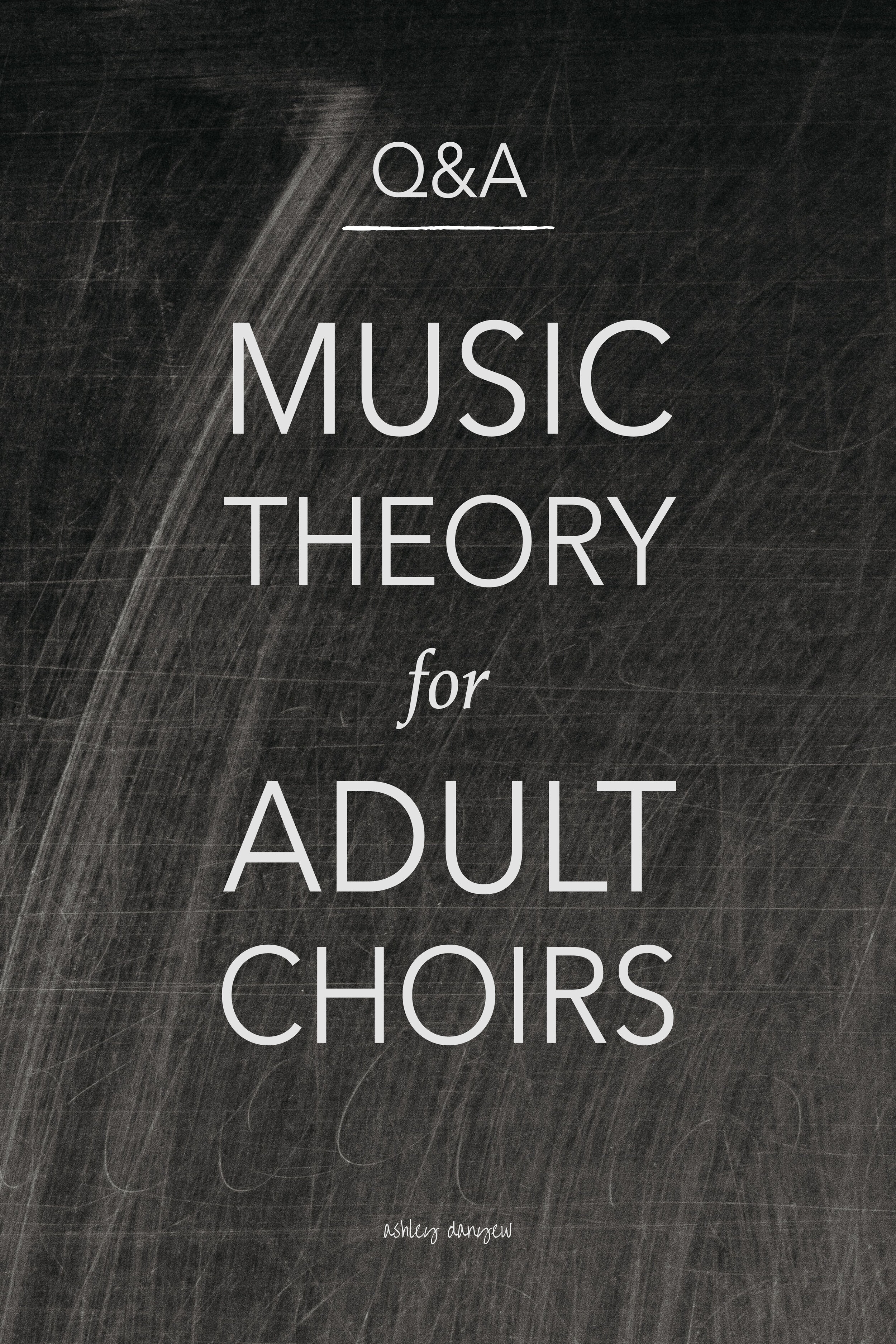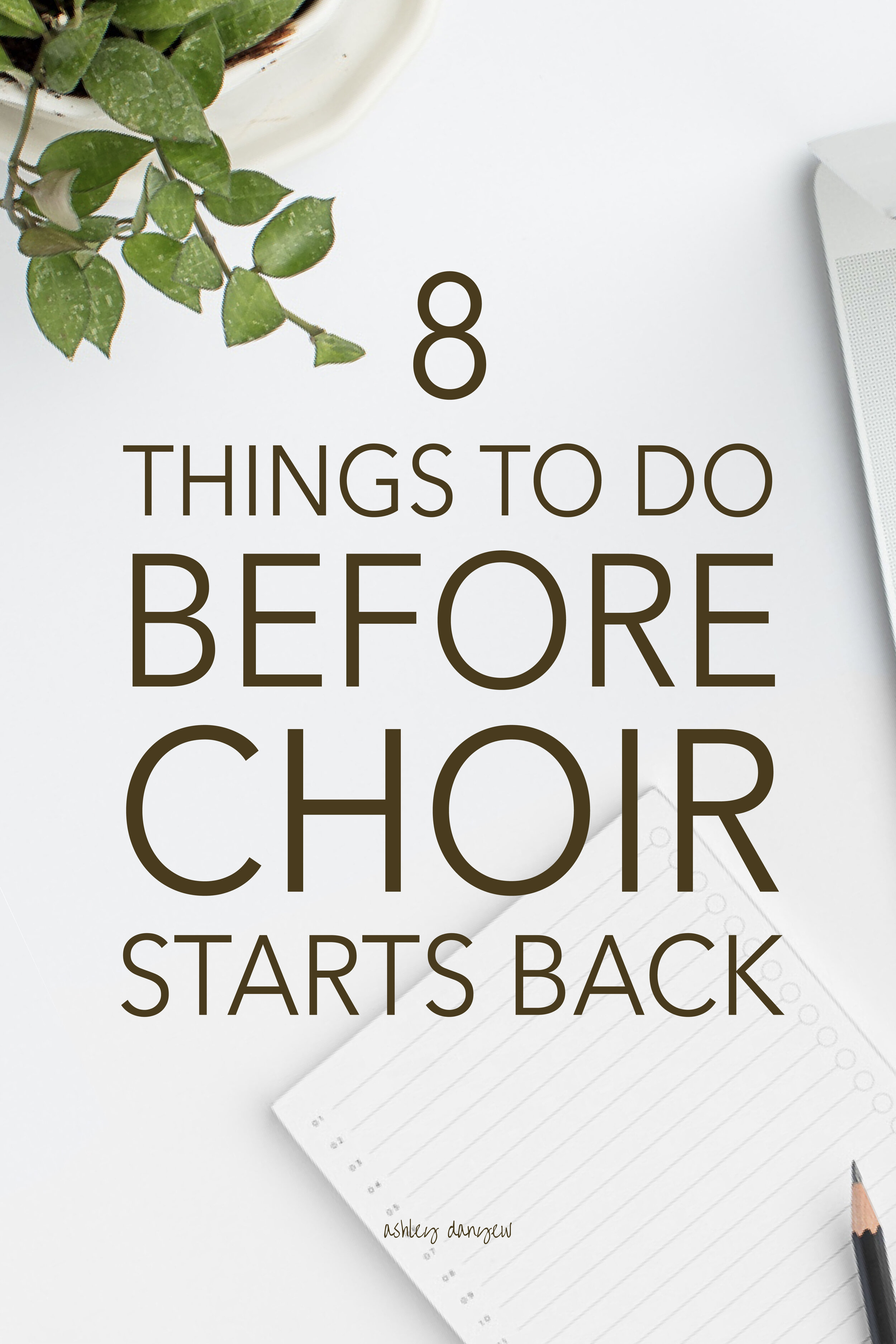It’s true with anything in life: There are some things you should do and some things you probably shouldn’t do.
It’s like the Goofus and Gallant comic strip that appeared in my monthly Highlights magazine growing up (classic Enneagram no. 1 here—I’ve always had a strong sense of right vs. wrong).
In the comic, two panels compare and contrast the actions of two brothers: Gallant's actions were kind and morally good while Goofus’s actions were thoughtless and disrespectful. It’s a classic example of right vs. wrong, good vs. bad, dos and don’ts.
We can relate, can’t we?
It’s part of learning how to live in society, be in community with others, and be a responsible adult.
And it’s true in teaching and directing, too.
For fun, here’s a list of some practical, real-life dos and don’ts for directing a church choir. Hope you enjoy!
The Dos and Don'ts of Directing a Church Choir
✘ Don’t spend an entire rehearsal on Sunday’s anthem.
I know it might seem logical to practice and prepare only the music you’re going to sing this coming Sunday in your midweek rehearsal, but I promise there’s a better way.
First, no one (not even you, if we’re being honest) wants to spend an hour (or more!) on one 3-minute piece of music. It’s just too much.
After about 20 minutes, you’ll see eyes start to glaze over, you’ll hear side-chatter start to happen in a few sections, and you won’t be able to make much more progress. It’s natural to start tuning things out after a while, and once you’ve lost them, it’s hard to get them back, especially if you aren’t switching gears and moving on to something else.
✓ Do plan ahead and choose 6-7 anthems to rehearse each week.
You’ll feel better prepared Sunday to Sunday and your choir will be more engaged and focused in rehearsal because you’ll be working on a variety of music that challenges them and keeps their attention. This also gives you the opportunity to talk about general singing and choral musicianship skills across pieces, things like: posture, breath, dynamics, tone, vowel shapes, and phrasing.
Related post: My Step-By-Step Process for Rehearsing a New Anthem
✘ Don’t break down each anthem into sections and work part by part.
“Let me hear the basses alone. Now, tenors alone. Now basses and tenors together…”
This is a quick way to lose everyone’s attention, and fast.
When you’re working with a group of people, try to find ways to keep the whole group engaged as much as possible. If you take 10 minutes to work with just one section, you’re basically giving everyone else permission to stop paying attention.
Plus, not every piece needs to be broken down into parts and built back up again. This is a single teaching strategy that should not be applied to every anthem you sing. Don’t simply go through the motions and teach every piece the same way.
✓ Do work on specific sections of an anthem and address individual parts only as needed.
It’s always a good idea to review the music you want to rehearse ahead of time so you can pick out the sections of each one that need the most time and attention.
Start with the newest or most challenging section rather than automatically starting at the beginning every time. Avoid singing repeats or sections they know really well—spend your rehearsal time on things that need rehearsing.
On occasion, you may find that a particular anthem needs some section work. Here are a few options:
Give everyone else something to do while you work with one section: have everyone sing the line together in their own octave, or have them sing their part silently, or listen for _____.
Ask one section to come 15 minutes early one week or let everyone else go 15 minutes early at the end of rehearsal so you can work with one or two sections at a time.
If you have an accompanist or someone in the group who is a capable section leader with some keyboard skills, consider taking 30 minutes of your rehearsal (once per semester, maybe) to split up (SA and TB) and work on 2-3 anthems.
✘ Don’t sing the same warm-ups every week.
Warm-ups are a helpful way to prepare the voice to sing, focus the mind, relax the body, and prepare new musical concepts.
But the minute you put these exercises on autopilot, you’ll see eyes start to glaze over and hear half-hearted attempts at singing. You’ll lose focus and concentration and the potential to make connections later in rehearsal.
✓ Do mix up your warm-up routine and pull ideas from the music you’re working on.
Be strategic about how you use this part of your rehearsal each week. Choose warm-ups that support new musical skills or concepts or tie in with some of the anthems you’re working on. After a few weeks, mix it up and choose 1-2 new things to try.
For instance, if you’re spending a lot of time talking about pure vowels, choose a few warm-up exercises that reinforce singing with pure vowel sounds and give your choir an opportunity to really listen to themselves and those around them.
If you’re talking a lot about breath and singing through long phrases, plan a few breathing exercises to help strengthen the diaphragm and build endurance.
Related posts:
50 Awesome Choral Warm-Ups for Church Choirs [free eBook]
Breathing Exercises for Choirs of All Ages
✘ Don’t wait for everyone to arrive.
I know it seems like the courteous thing to do. Plus, it’s practical—you know you’re going to have to give the same directions again once everyone arrives, right?
But waiting to start rehearsal until everyone is there, in their seats only teaches them that they can come in 5-10 minutes late and not miss anything. There’s not a hard-and-fast start time. And what about those who made the effort to arrive on time and are sitting in their seats, ready to begin? Waiting to start rehearsal says to those people that their time isn’t as important. They might as well be late, too!
✓ Do start and end rehearsal on time.
Make a point to always start and end rehearsal on time, no matter how many people are there. This communicates respect to your choir members (remember, they're volunteers!) and shows that you are serious about the work you do in rehearsal.
By showing respect to your choir members, they’re more likely to show respect to you in return.
Develop the practical skills
you need to lead and teach your choir
with creativity and confidence.
Join me inside Music Education and Leadership Skills for the Adult Choir Director, an online mini course for church musicians.
Packed with practical tools, resources, and strategies you can use right away, you’ll learn the basics of how adults learn, how to teach vocal technique and choral methods, develop sight-reading skills, choose music, and plan rehearsals.
✘ Don’t over-explain or over-introduce a new piece.
It can be tempting to go on and on about the text or how this ties in with the Scripture reading in a few weeks or where you first encountered the piece or give a play-by-play of what happens from beginning to end.
But the truth is, the more you talk, the less likely they are to pay attention.
✓ Do keep talking and spoken directions to a minimum.
Keep your directions, explanations, and introductions very short and to the point so you can keep everyone singing as much as possible. Remember, there is personal fulfillment in discovering something yourself, rather than having everything laid out for you before you begin.
Also, think about other ways to introduce or reinforce musical concepts as you go: vocal model, hand sign or gesture, facial expression, movement, etc.—small, simple reminders that don’t require you to stop and verbally explain something.
✘ Don’t assume people know how to mark their music.
It seems obvious.
Circle it. Write in the vowel. Add a breath mark. Draw a slur.
But remember, many of your choir members are new to all this. Some of them may not even really read music!
The concept of “marking" their music and knowing what symbols or short-hand to use may be foreign to them. And since adults are not likely to stop and ask, “What do you mean when you say, ‘mark it’? What am I supposed to write?” The more likely scenario is that they dutifully hold their pencil and never mark anything in their music.
✓ Do give them ideas for how to mark breaths, vowels, and other challenging spots for next time.
First, encourage everyone to have a pencil in hand during rehearsal (you’d be surprised how many people don’t have one with them!).
Second, when you stop to give feedback on something, say something like, “Take a second to mark this in your music so you remember it for next time. Here’s how I might mark it in my music…” and give a few examples.
Here’s a cheat sheet:
Breath = large comma above the stave
No breath = slur/arched line from note to note
Look up = eyeglasses
Difficult interval = circle two notes, write name of interval (e.g. "4th”)
Direction/arrival points in phrase = downward arrow on key notes/arrival points in phrase
Tall vowel = arrow pointing up and down above note, pure vowel reminder (e.g. “ah”)
Trailing consonants = circle ending consonant and draw an arrow to the cut-off
✘ Don’t let people interrupt with an unrelated story or anecdote.
One little side comment can quickly derail a whole rehearsal if not kept in check.
If you allow choir members to interrupt you every time they think of something (related or unrelated to what you’re doing), you’re essentially turning over control of the rehearsal to the group.
Related post: What Type of Choir Director Are You?
The most dominant members will naturally take charge, freely sharing their thoughts and remarks at any time, which can be frustrating for others in the group, a distraction to the work at hand, and a big drain on productivity and what you’re able to accomplish together.
✓ Do stay on task and model what it looks like to be focused and efficient.
Ask if people have questions about the music as you go. Keep things moving—don’t delay in between pieces or allow choir members to get off-topic. Maintain control of rehearsal by having a clear plan, a set number of pieces you want to get through, and an order that’s logical and efficient.
Looking for the infographic version?
Here you go:
Which one of these things resonates with you the most? I’d love to hear your thoughts!








































